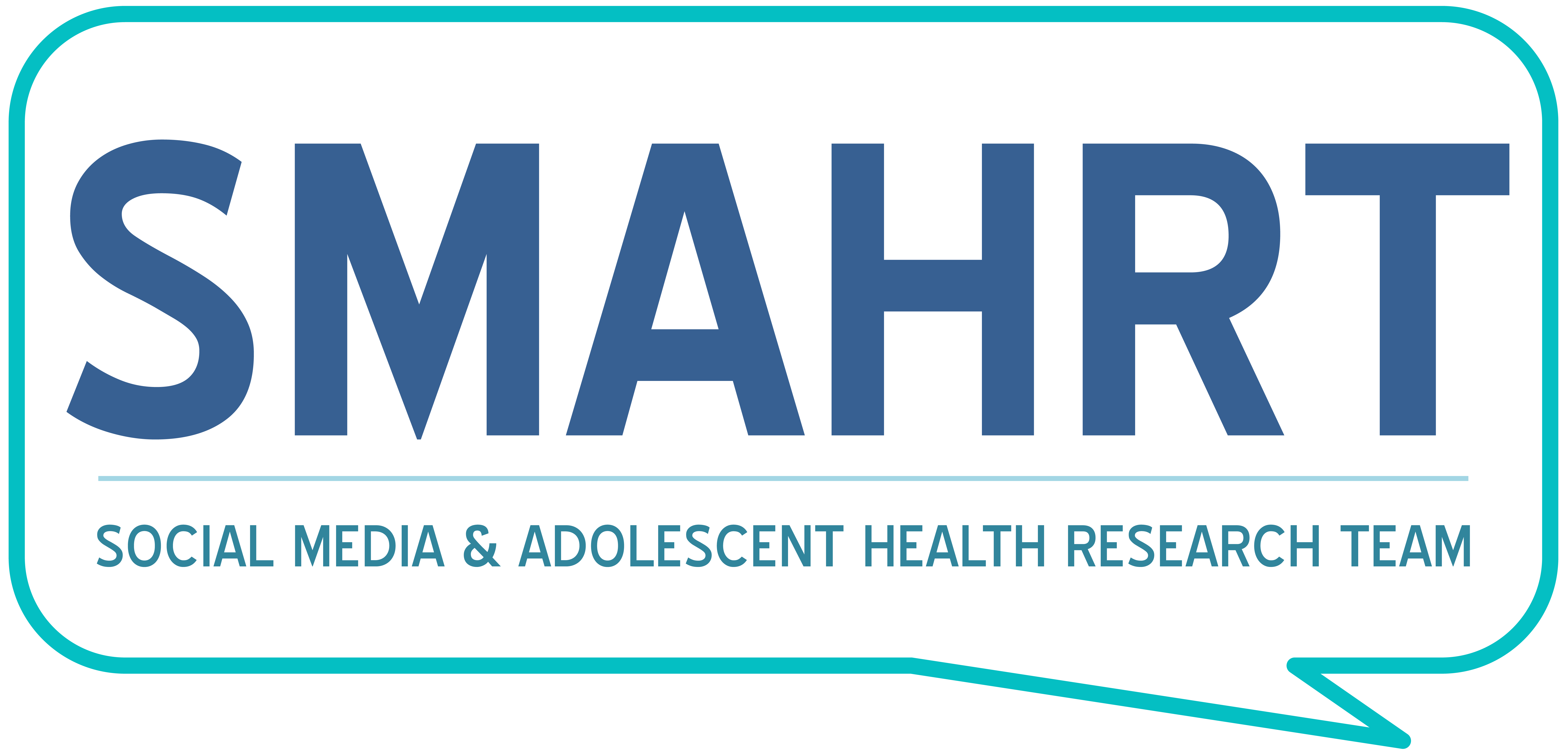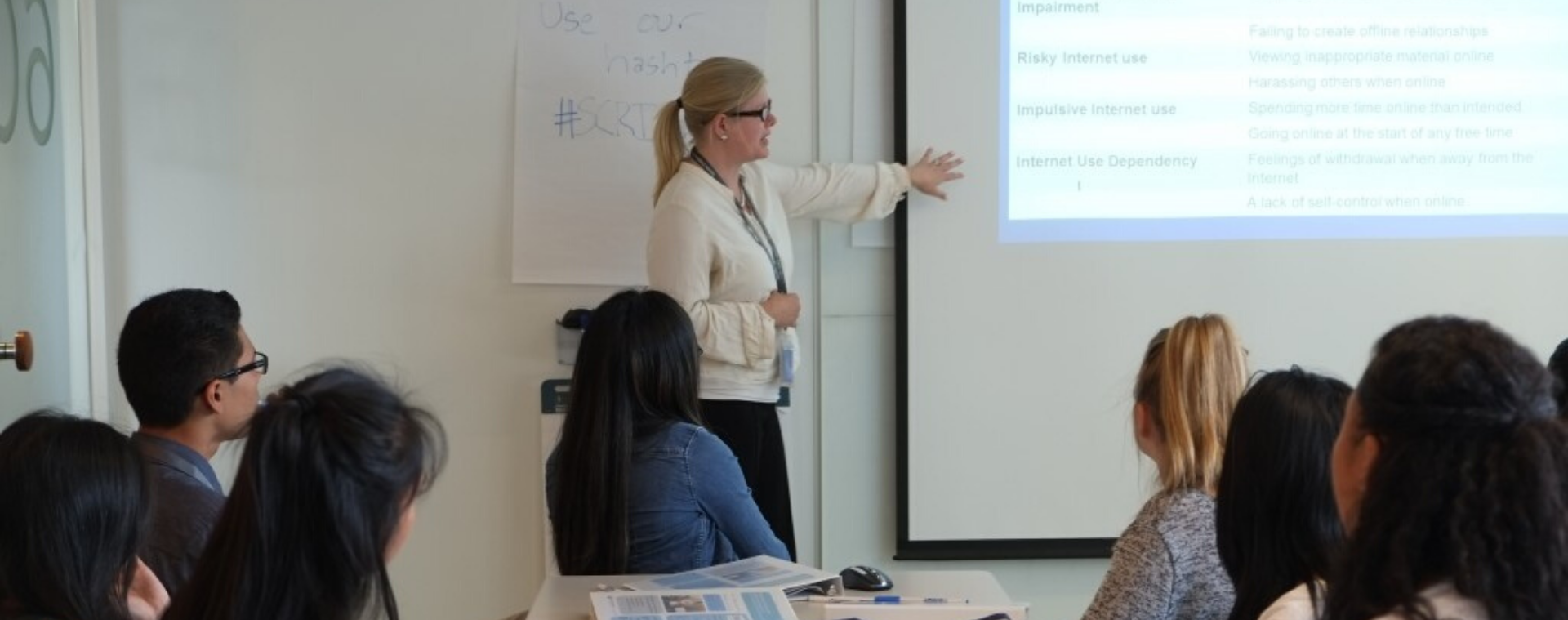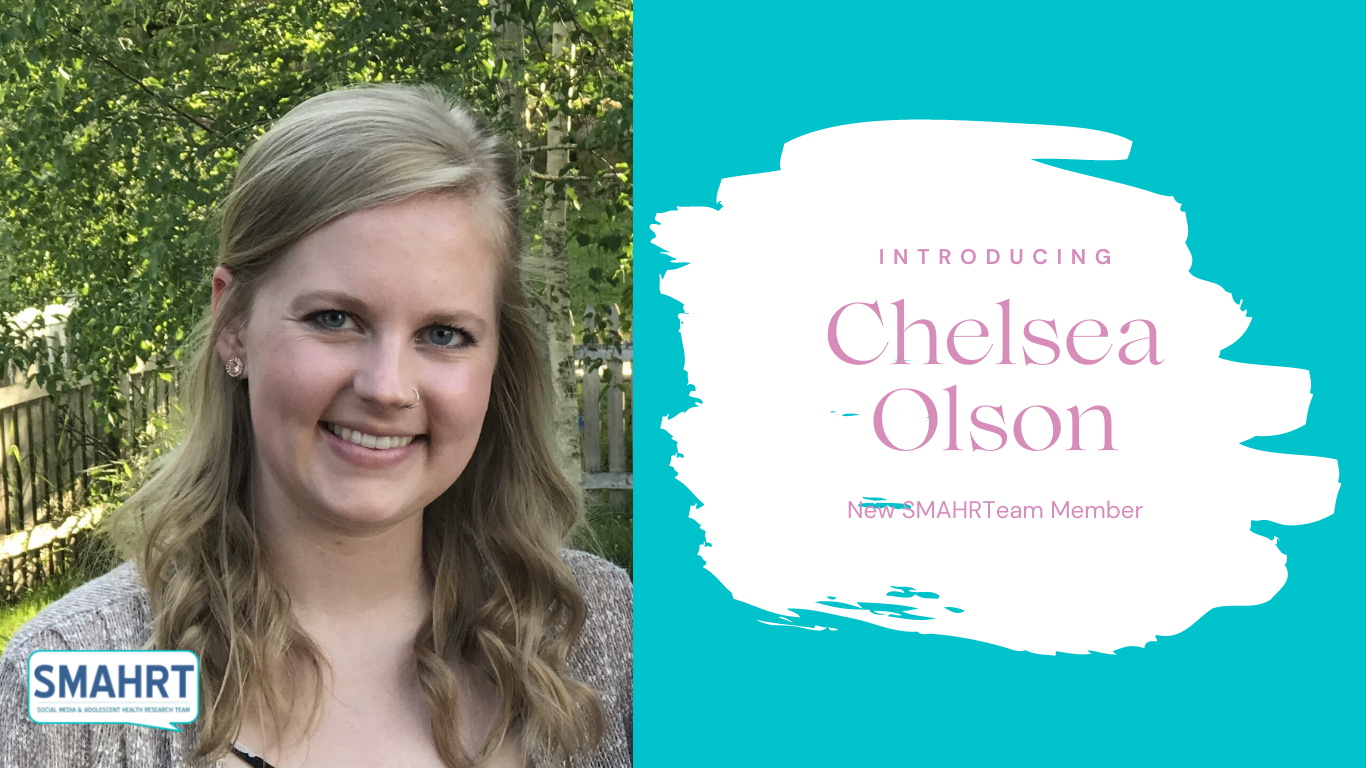Chelsea Olson is the latest addition to the SMAHRT Team. She recently received her Ph.D. in Educational Psychology from UW-Madison and is currently involved in the Technology and Adolescent Mental Wellness (TAM) program and the Technology and Young Adult Health (TYAH) study. Below, Chelsea talks about her past and present research and shares her thoughts on the role of social media in the lives of adolescents.
Q: You recently received your Ph.D. in educational psychology from UW Madison. What made you want to pursue that?
A: I did my undergrad at UW Madison and majored in psychology. When I was exploring options, I knew I would probably have to go to get some sort of advanced degree. I took some insight classes and really enjoyed learning about human development. Then, I joined a psychology lab with Dr. Amy Vollmer, and she was doing work on bullying and Twitter. That was really interesting to me, so I decided to pursue a Ph.D. in educational psychology. That’s kind of the reason why I enjoyed research and found that it was a place where I could make a difference.
Q: Can you talk about some of the research you were doing prior to joining SMAHRT?
A: I specialized in human development, specifically, adolescent development. I focused on learning about social-emotional, cognitive development. My research intersected two important contexts in adolescents’ lives, relationships, friendships and romantic relationships on social media. A lot of my work focused on online aggression, such as cyberbullying and cyberstalking—and how that affected adolescents’ mental health and physical health in school outcomes.
Q: What made you want to join the SMAHRT team after you got your Ph.D.?
A: In grad school, I was fortunate to be involved in a fellowship focused on youth social media and assessment. We met Dr. Megan Moreno a couple of times, so that’s how I learned about her work. Working with Dr. Moreno and the SMAHRTeam was the perfect fit for me because they do similar research to what I did in my grad school experience. It was the perfect space to continue doing research and be involved in doing something similar to what I did in grad school. Also, getting to meet everyone on the team during my interview process was really nice.
Q: Can you talk about some of the current research that you’re working on with the SMAHRT team and the projects that you’re involved in?
A: I started a couple of weeks ago, so I’m still learning the lay of the land at the moment, but I have mostly been involved and learned about TYAH and training to work on that study. I’ve been training to code, and I’ve also learned about all the other projects going on, but my focus will likely be TYAH to start. Then, I’ll start on an independent project.
Q: In your personal opinion, how can technology support adolescent mental wellness?
A: I think that teens and adolescents use social media to a great extent. They’re all on all sorts of platforms, so technology is really a space where we can access youth. I’ve enjoyed learning about the projects that have been funded through the TAM program. That’s a really cool way to try and access youth to give them information on all sorts of things that they might need information on. Something that I would be interested in exploring in the future is sex education, figuring out ways to help adolescents, especially adolescents who don’t get comprehensive sex education through school. I think social media could be a tool to help learn about some of those things.


